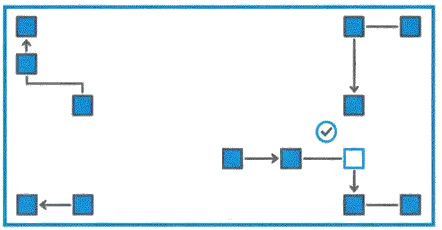About
Introducing the Eight Pillars of ERP Success
The Problem With Partial Frameworks
ERP implementations are high-stakes endeavors – ERP implementations are a 180 billion dollar a year industry. Yet, the failure rate remains stubbornly high. Why? Because most organizations rely on inherited methodologies or vendor templates that fail to account for the entire universe of what needs to go right.
The "Blank Sheet of Paper" Solution
I didn’t want to recycle an existing framework. Instead, I started with a blank sheet of paper and adopted a mindful, ground-up approach. I didn’t ask how to fit a project into a template; I analyzed thousands of real-world outcomes to identify every Critical Success Factor (CSF) and Critical Failure Factor (CFF) documented in modern ERP history.
It’s not easy, but if you get these eight things right, you will be successful.
CSFs and CFFs Analyzed. The entire universe of risk and success.
Credible academic and industry sources
Essential Pillars. The resulting comprehensive taxonomy
Explore the Eight Pillars of Implementation Excellence
Use the slider below to browse the high-level overview of each pillar (Overview). Dive deeper into the detailed taxonomy, the implementation process, and the supporting tools for each area.
Methodolgies Don't Implement ERP Systems
You probably have an implementation methodology with logical phases.
A common stumbling block in ERP projects is the gap between the high-level methodology and the reality of execution. Most methodologies tell you what needs to be done (e.g., “Define Future State”) but are thin when it comes to how to do it.
The truth is that methodologies are not differentiators. The scope of the underlying activities, the approach, and the quality of execution within each phase will determine your success.
The truth is that methodologies don’t do much work. Success is determined by the scope of the underlying activities, the resources and processes applied, and the quality of execution within each phase.
Launch Phase – Thin

Launch Phase – Augmented

The Adaptive 7: A Universal Framework for Execution
I reviewed multiple ERP implementation methodologies—from vendor-specific approaches to generalized Agile and Waterfall models. While the names of phases differed, the fundamental workflow required for success was typically shared. The Adaptive 7 is not a new methodology intended to replace yours. It is an intentionally generic, adaptable framework. Its purpose is to serve as a reference model to illustrate the comprehensive requirements of the Eight Pillars map onto a typical implementation methodology.
How to Use the Adaptive 7
The Adaptive 7 is intended to assess, augment and de-risk your current approach. Use it to compare against the scope and approach you are currently using. It provides a structure to identify gaps, enhance critical activities, and ensure that every success factor identified in the Eight Pillars is addressed within your project plan.
Diagnose
Overlay the Adaptive 7 onto your methodology to identify missing activities or areas lacking sufficient depth.
Integrate
Understand exactly when and how each of the Eight Pillars interacts with the project lifecycle.
De-Risk
Move beyond high-level checklists to a comprehensive, actionable plan that addresses known failure factors.